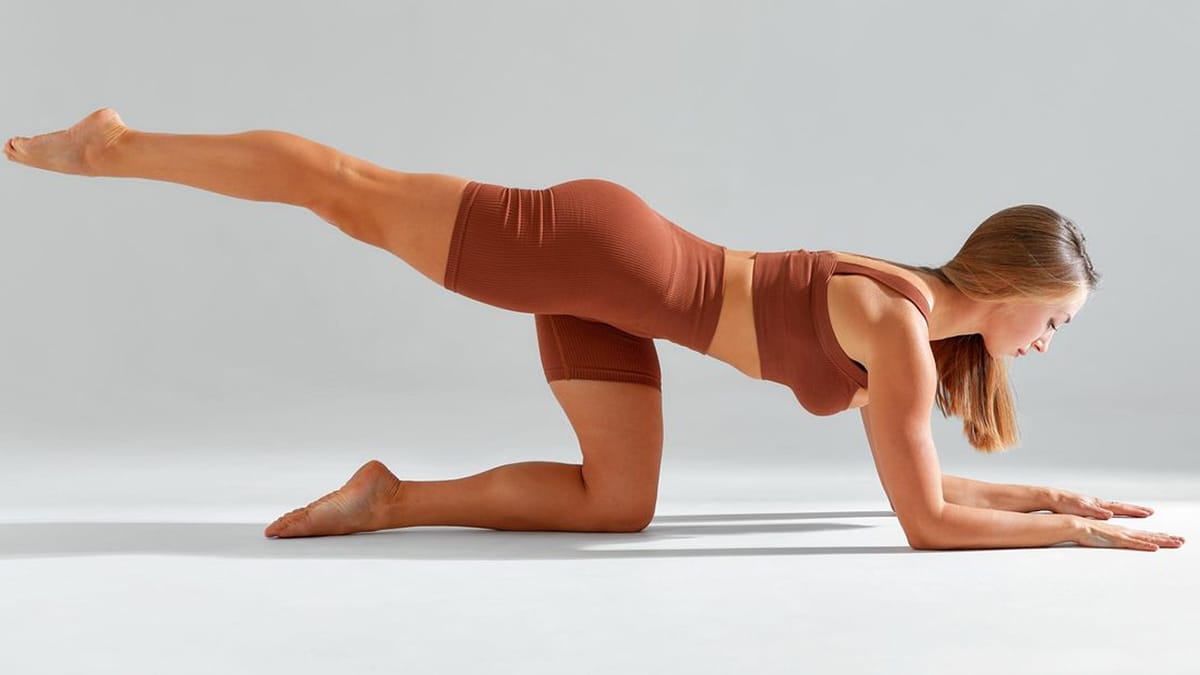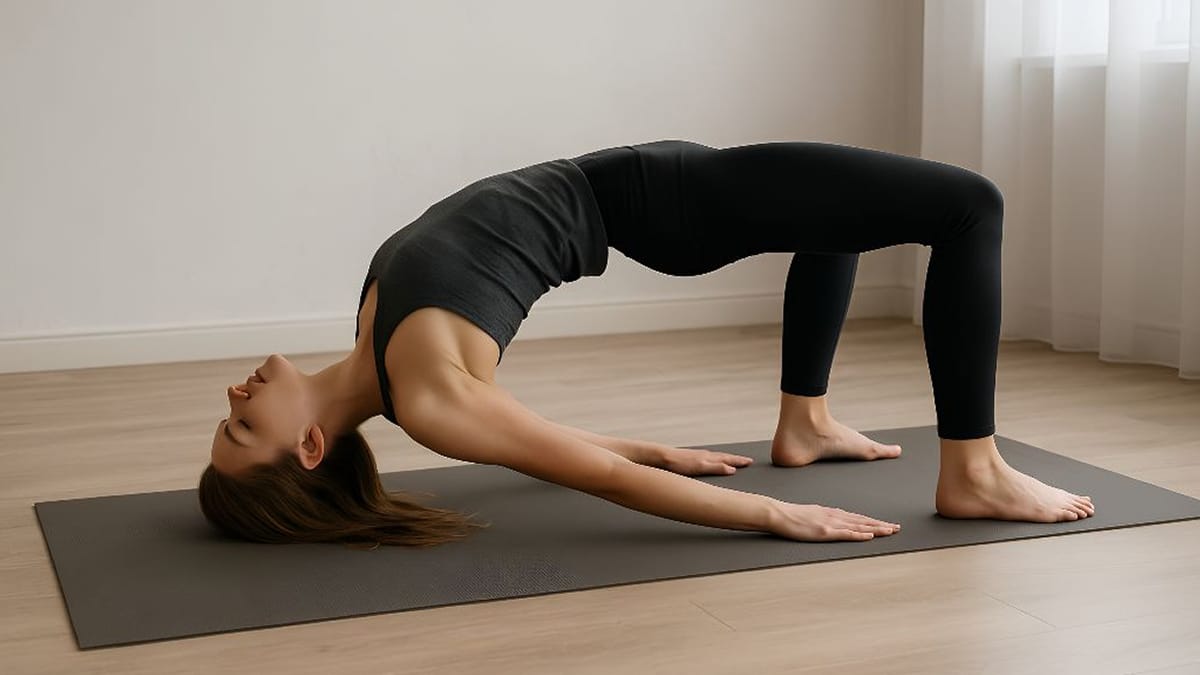How Does Yoga Stretching for Beginners Improve Flexibility Fast?
If you have ever felt stiff in the morning or noticed that even simple movements feel limited, you are not alone. Flexibility is something many people struggle with, especially beginners in fitness. Yoga stretching offers one of the fastest, safest, and most effective ways to improve flexibility even if you are just starting your journey. In fact, research shows that regular stretching can enhance muscle elasticity, joint mobility, and overall body coordination, making you feel lighter, stronger, and more energized throughout the day. For beginners, yoga stretching is more than just bending; it is about learning controlled movement, mindful breathing, and progressive improvement that leads to noticeable results in just a few weeks.
How Does Yoga Stretching for Beginners Improve Flexibility Fast?
The beauty of yoga stretching lies in its adaptability. You do not need to be naturally flexible or have years of experience. With consistent practice, anyone can experience fast gains in flexibility and mobility. This is because yoga combines static and dynamic stretches, works with your body weight, and gradually lengthens muscles while also calming the nervous system. By training both body and mind, you can overcome stiffness, reduce risk of injury, and unlock a new sense of physical freedom.

Below, we will explore how yoga stretching for beginners improves flexibility quickly and introduce six beginner-friendly yoga stretches that target tight muscles, open the body, and deliver results.
Why Yoga Stretching Works for Beginners
One of the main reasons yoga stretching is highly effective for beginners is that it focuses on gentle progress. Unlike intense gym workouts or aggressive stretching routines that can cause injury, yoga is structured around gradual improvement. Beginners are guided to hold postures at their own comfort level, breathe deeply, and extend just a little further each time. This mindful approach prevents overstretching and builds flexibility safely.
Another advantage is that yoga stretching engages both large muscle groups and smaller stabilizing muscles. This balanced activation encourages muscles to relax and lengthen while strengthening surrounding tissues. The result is a body that becomes both more flexible and more resilient. Over time, this flexibility spills over into everyday life, making tasks such as bending, reaching, or even sitting for long hours far easier.
Finally, yoga stretching stimulates blood flow and boosts oxygen supply to tight muscles, accelerating recovery and reducing stiffness. Studies have shown that dynamic stretching techniques in yoga can improve range of motion and muscular endurance in as little as four weeks. For beginners seeking fast results, this makes yoga an ideal option.
Yoga Stretch 1: Forward Fold (Uttanasana)
The Forward Fold is one of the most beginner-friendly stretches and a classic yoga posture for improving flexibility. It targets the hamstrings, calves, and lower back, which are often the tightest areas for beginners.
How to practice:
Stand with your feet hip-width apart. Inhale deeply, then exhale as you hinge forward at the hips, letting your arms hang toward the floor. Bend your knees slightly if needed to avoid strain. With practice, you will notice your torso gradually coming closer to your thighs.
Benefits:
This stretch lengthens the spine, reduces tension in the back, and releases tight hamstrings. Regular practice helps you bend forward more easily in daily life while also improving blood circulation to the brain, leaving you refreshed and energized.
Yoga Stretch 2: Cat-Cow Pose (Marjaryasana-Bitilasana)
This gentle flowing sequence is excellent for beginners because it improves spinal flexibility while synchronizing breath and movement.
How to practice:
Start on all fours with your hands under your shoulders and knees under your hips. Inhale as you arch your back, lifting your chest and tailbone upward (Cow Pose). Exhale as you round your spine, tucking your chin toward your chest (Cat Pose). Flow slowly between these movements for several breaths.
Benefits:
Cat-Cow loosens tight back muscles, improves posture, and enhances mobility in the spine. It also warms up the body, making it easier to perform deeper stretches afterward. For beginners, this sequence is often the gateway to greater flexibility because it teaches awareness of spinal alignment and breath control.
Yoga Stretch 3: Low Lunge (Anjaneyasana)
The Low Lunge is a powerful beginner stretch for opening the hips, quads, and groin, which are commonly stiff from long periods of sitting.
How to practice:
Step your right foot forward into a lunge position, keeping your left knee on the ground. Place your hands on your right thigh or reach them overhead for a deeper stretch. Hold the position while breathing deeply, then switch sides.
Benefits:
This stretch relieves tight hip flexors, improves pelvic mobility, and reduces lower back tension. Since the hips play a central role in body movement, increasing their flexibility can transform how you walk, run, or even sit. Beginners often feel a dramatic difference after just a few sessions.
Yoga Stretch 4: Seated Forward Bend (Paschimottanasana)
This stretch is a classic posture for improving hamstring flexibility and spinal mobility.
How to practice:
Sit on the floor with your legs extended straight in front of you. Inhale as you lengthen your spine, then exhale as you fold forward, reaching toward your toes. Keep your back straight and bend your knees slightly if needed.
Benefits:
Seated Forward Bend stretches the hamstrings, spine, and shoulders. It also calms the nervous system, helping reduce stress while enhancing flexibility. Beginners often notice that with consistent practice, their reach extends further each week.
Yoga Stretch 5: Butterfly Pose (Baddha Konasana)
For beginners with tight hips and inner thighs, the Butterfly Pose is simple yet powerful.
How to practice:
Sit with your legs bent and the soles of your feet pressed together. Hold your feet with your hands and gently let your knees drop toward the floor. Keep your spine tall and breathe deeply.
Benefits:
This pose opens the hips, stretches the groin, and reduces stiffness caused by sitting for long hours. Over time, it enhances hip rotation and makes everyday movements more fluid. Beginners who practice this stretch consistently often notice rapid progress in hip flexibility.
Yoga Stretch 6: Downward-Facing Dog (Adho Mukha Svanasana)
One of the most iconic yoga poses, Downward Dog stretches multiple areas of the body at once.
How to practice:
Start on all fours, then lift your hips upward while straightening your arms and legs, forming an inverted V-shape. Press your heels toward the floor and keep your spine long. If your hamstrings are tight, bend your knees slightly.
Benefits:
This stretch lengthens the hamstrings, calves, and spine while strengthening the arms and shoulders. It also increases blood circulation and energizes the body. Beginners may find it challenging at first, but with regular practice, Downward Dog becomes a foundational pose for improving full-body flexibility.
The Science Behind Yoga Stretching and Flexibility
Several studies confirm that yoga stretching is highly effective for improving flexibility. A study published in the Journal of Bodywork and Movement Therapies found that participants practicing yoga twice a week for six weeks experienced significant improvements in hamstring and spinal flexibility. Another study in the International Journal of Yoga reported that beginners who practiced yoga for just 30 minutes daily gained noticeable improvements in mobility, reduced stiffness, and better posture within one month.
The reason yoga stretching works so well is its unique combination of static holds, dynamic flows, and mindful breathing. Unlike traditional stretching, yoga also activates the parasympathetic nervous system, allowing muscles to relax more deeply and stretch further without injury.
Tips and Tricks for Beginners to Improve Flexibility Fast
Practice regularly, even if only 10–15 minutes per day, because consistency is more powerful than long, occasional sessions.
Always warm up your body with light movement before attempting deeper stretches to avoid strain.
Focus on breathing deeply and evenly, which helps release tension in the muscles and improves stretch depth.
Avoid pushing too hard or comparing yourself with others; flexibility is personal and develops gradually.
Combine yoga stretching with proper hydration and balanced nutrition to support muscle elasticity.
Frequently Asked Questions (FAQ)
How long does it take for beginners to see results in flexibility with yoga stretching?
Most beginners notice improvements within 3–4 weeks of consistent practice, though individual results may vary based on frequency and body condition.
Is yoga stretching safe for complete beginners with no experience?
Yes, yoga stretching is safe for beginners as long as you start slowly, listen to your body, and avoid forcing movements.
Can yoga stretching replace regular workouts?
Yoga stretching improves flexibility, balance, and strength, but for complete fitness, it is best combined with cardio and resistance training.
Do I need special equipment to start yoga stretching?
No, a yoga mat is enough. Beginners may also benefit from yoga blocks or straps for extra support.
What is the best time of day to do yoga stretching for flexibility?
Morning sessions energize the body, while evening sessions are excellent for releasing tension and improving sleep quality.
Can yoga stretching help prevent injuries?
Yes, improving flexibility through yoga stretching reduces muscle tightness and increases joint mobility, lowering the risk of injuries.
Are there recommended beginner-friendly yoga products to support stretching?
Yes, you can consider a non-slip yoga mat, supportive yoga blocks, stretching straps, cushioned knee pads, and a lightweight water bottle to stay hydrated.
Final Thoughts: 7 Powerful Tips for Beginners
Start with basic poses and progress gradually.
Be consistent with short daily practices instead of occasional long sessions.
Always breathe deeply to enhance relaxation and muscle release.
Use props like yoga blocks to modify poses until flexibility improves.
Stay patient and avoid comparing progress with others.
Combine yoga with healthy lifestyle choices such as proper sleep and hydration.
Celebrate small milestones, like being able to touch your toes, as motivation to continue.
By integrating yoga stretching into your routine, you not only gain flexibility quickly but also develop a healthier, more energized lifestyle. With patience and consistency, yoga transforms stiffness into freedom of movement, and every beginner can experience the joy of progress.
Reference & Additional Reading
Inspired by studies and insights from:
www.health.harvard.edu
www.menshealth.com
www.healthline.com
www.womenshealthmag.com
www.ncbi.nlm.nih.gov
www.webmd.com
www.medlineplus.gov
www.tridenttech.edu
www.burnexia.com

